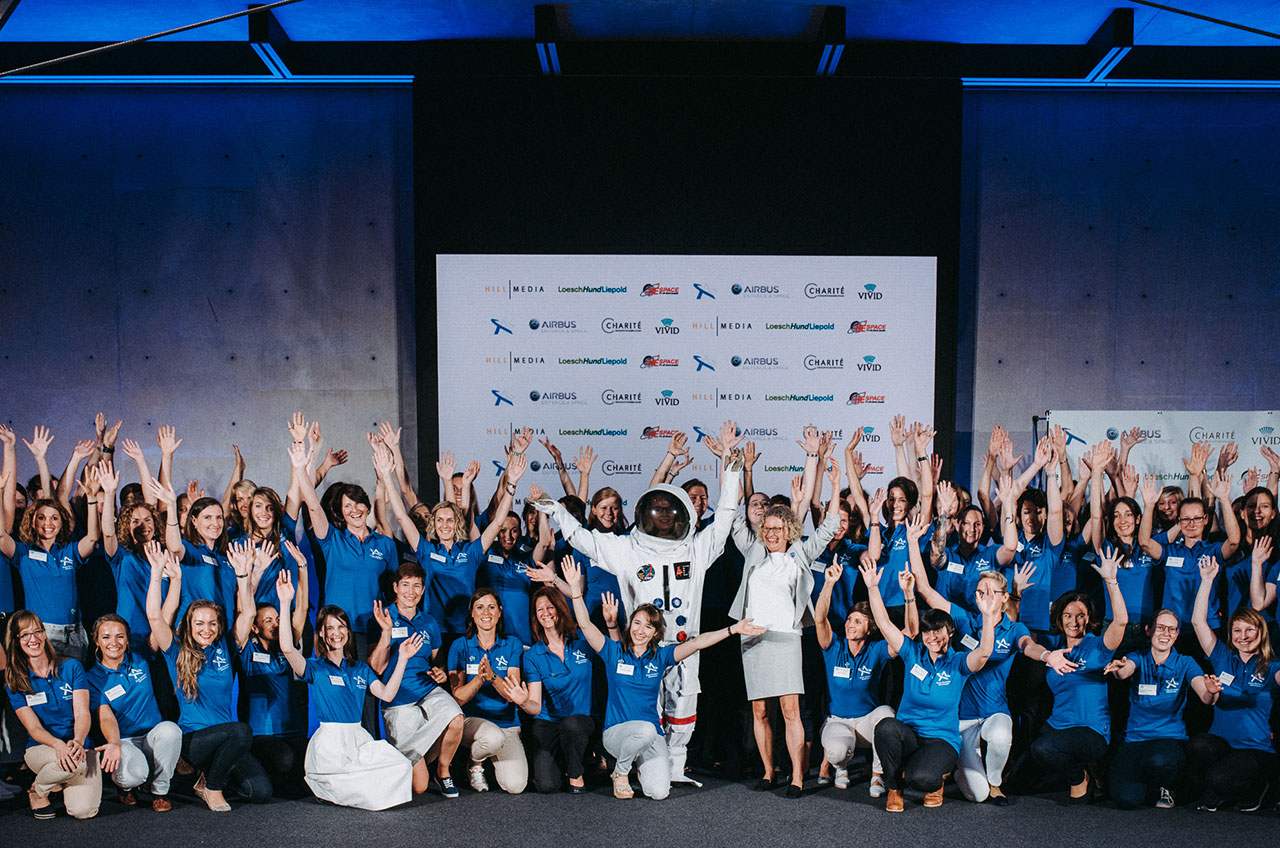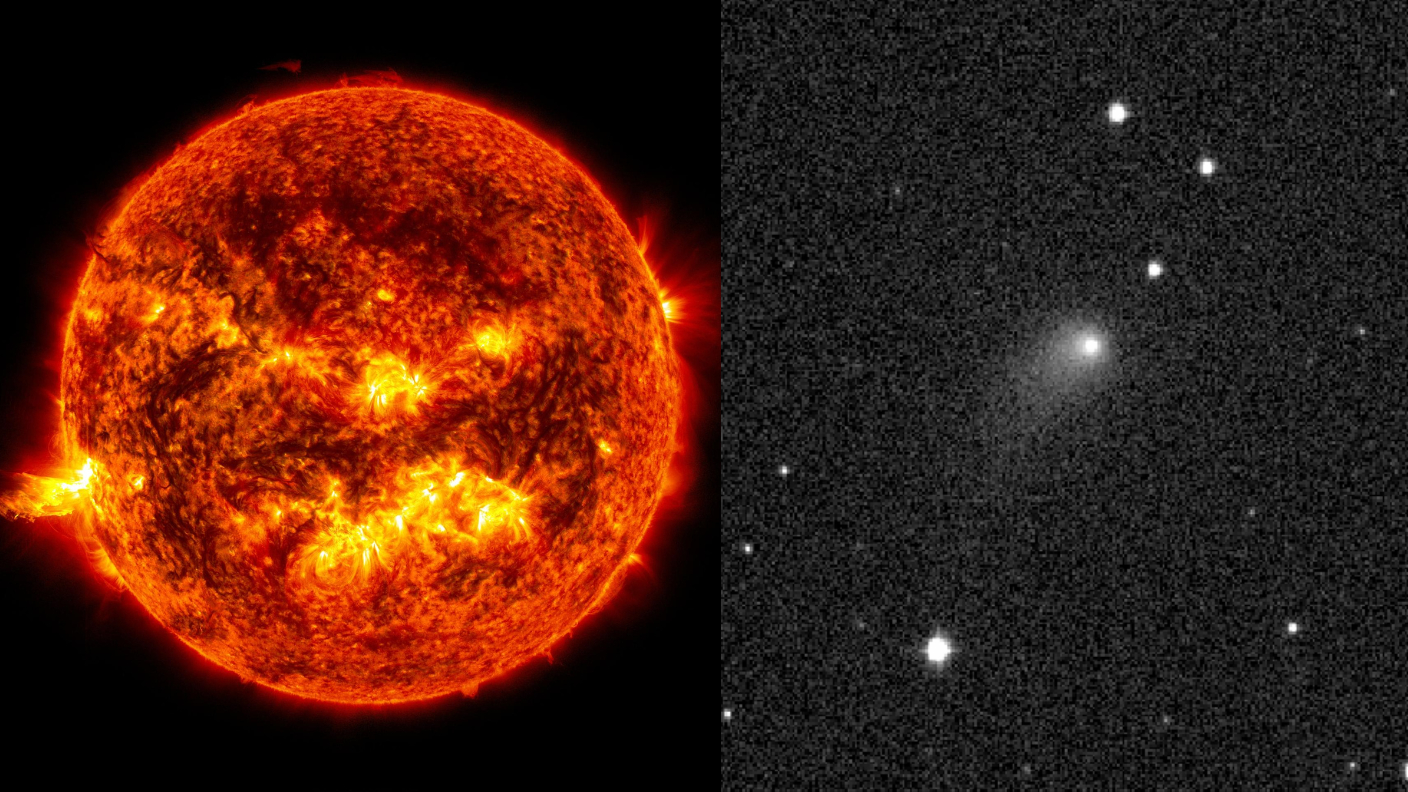'Die Astronautin': Private Campaign Seeks First German Female Astronaut

The search is on for Germany's 12th astronaut to fly into space.
After Americans and Russians, more Germans have been launched into orbit than astronauts from any other country — a total of eleven since 1978. But from Sigmund Jähn to Alexander Gerst, all eleven of the space fliers have been men. Now a private effort is underway to find, train and fly the first German woman to the International Space Station by 2020.
"We thought that after eleven German men, it is time for a woman to fly into space," Claudia Kessler, the CEO of HE Space, an aerospace recruitment agency, told NBC News. [Photos: German Astronaut Alexander Gerst's Blue Dot Flight]
Since launching "Die Astronautin" (The Female Astronaut) in March, HE Space has narrowed its initial applicant pool to a list of 120 candidates. Germany's space agency, DLR (Deutschen Zentrums für Luft- und Raumfahrt), has joined the effort to help conduct the additional screening needed to identify the finalists.
To be eligible for Die Astronautin, women were required to be German nationals between the ages of 27 and 37, with a degree in engineering or science (or equivalent military credentials). Applicants needed to be in good physical and psychological shape and have a professional or personal interest in aerospace or aviation.
The original call for Die Astronautin applications produced 408 qualified candidates — a 32 percent increase over the number of German women who applied (but who were not selected) for the European Space Agency's 2009 class of astronauts. On Sept. 14, after reviewing the applicants and conducting interviews by video conference, HE Space narrowed down the pool of candidates to 120. The company then held a public event in Berlin, where about 70 of the selected candidates appeared.
Since then, 86 of the 120 candidates have been selected for medical and psychological aptitude tests at the German Aerospace Center in Cologne.
Breaking space news, the latest updates on rocket launches, skywatching events and more!
HE Space secured the sponsorships and funding needed to promote the program, bring the candidates together and run the selection in conjunction with DLR. Two finalists are expected to be announced in March 2017.
How and when the chosen candidate will launch to space is still to be determined. HE Space modeled its program on past recruitments run by Malaysia and South Korea, which included those countries purchasing seats on board Russia's Soyuz spacecraft for short stays on the space station.
Roscosmos, Russia's federal space corporation, recently decided to reduce its crew size on the station from three to two cosmonauts. The move could result in seats becoming available on the Soyuz, though it is not yet clear how many free seats,if any, would be on short-term "taxi" flights of the type a Die Astronautin candidate could fly.
HE Space still needs to identify and secure the commercial sponsorships or other sources of funding to underwrite the mission. DLR hasn't said if it plans to contribute financially to the flight.
HE Space has not released its short list of 120 candidates, but some of the women have been identified by German media and some have identified themselves through social media, including by joining a private Facebook group.
Most of the candidates who have come forward are about 30 years old. Many of them work in aerospace or related professions, in line with the competition's requirements. In press statements, HE Space officials said the candidates include a fighter pilot, aerospace engineers, scientists and doctors.
Based on interviews conducted on behalf of collectSPACE.com, the candidates include a mix of women who have harbored a life-long ambition to fly in space but thought they would never get the chance, to those who have been drawn to the International Space Station as the ultimate research lab, to those who were curious to enter the program and see how far their talents could take them.
At least two major European aerospace companies have a number of employees among the group of 120, including satellite provider OHB with six, and Airbus with five.
Continue reading at collectSPACEfor profiles of some of the Die Astronautin candidates.
Follow collectSPACE.com on Facebook and on Twitter at @collectSPACE. Copyright 2016 collectSPACE.com. All rights reserved.

